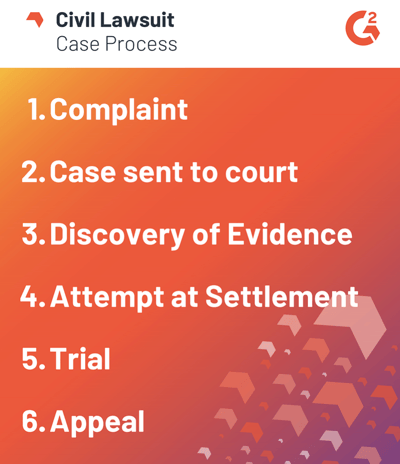What is the Definition of Plaintiff in a Easy Way That a Kid Would Understand
Whether you're standing in front of Judge Judy or the Supreme Court, you should understand your position in a lawsuit.
In legal terms, the plaintiff is the person who brings a lawsuit against another party. This is not to be confused with being seen as the victim in a lawsuit, because being the plaintiff doesn't mean you're in the right. It's simply the legal term for being the person who filed a lawsuit against the defendant.
Definition of plaintiff:
The individual who files a lawsuit against another party is the plaintiff, while the party the lawsuit is brought against is considered the defendant.
Anyone can be a plaintiff. In cases where the IRS sues someone for tax-evasion or owing back taxes, the IRS is the plaintiff in that litigation process. Businesses, government entities, and corporations can also be plaintiffs in a lawsuit.
How does a plaintiff file a lawsuit?
There are plenty of reasons you might file a lawsuit against another person or entity. Maybe you hired a roofer to re-shingle your roof and they skipped out with your money. Or maybe you were the victim of unfair discrimination at work. Whatever the case, every lawsuit is filed using the same six step process.

It's important to note that as an individual or business, you'll likely be filing what's known as a civil lawsuit. A civil lawsuit can be filed by anyone against any other person or entity and is usually used to seek monetary compensation, not jail time. A criminal lawsuit is levied by the government against any individual who has been accused of committing a crime.
The role of a plaintiff in litigation
When you file a lawsuit against someone, the burden of proof falls on you as the plaintiff. It is your job to prove to the judge and court that the defendant has violated the law. If you decide to bring a lawsuit against another person you must come prepared with evidence that the defendant committed the act you're accusing them of.
This is done by creating a burden of proof, and must include the following three things:
- Proof beyond a reasonable doubt that the defendant is guilty of the accused crime, this includes proving that no other individual could have committed the crime.
- Preponderance of the evidence, this means the evidence presented is impactful and meaningful toward deciding the outcome of the trial.
- Clear and convincing evidence, this requires that the evidence clearly shows that the defendant is guilty of the crime. This is considered the next step after evidence is considered preponderant.
In most civil cases, the party that provides the most preponderant evidence is awarded the judgement.
For example, if you provide a dozen witnesses who claim they "might" have seen the defendant at the scene of the crime, that evidence isn't as preponderant as a time-stamped video of the defendant at work during the time the crime was committed.
The quality of evidence matters more than the quantity.
Suit yourself
Bringing a lawsuit against another individual is a huge investment of your time and your money. If you plan on filing charges against someone, you'll want the right lawyer for the job.
If you plan on filing a civil suit against someone else, you're going to need a lawyer. Check out the best legal services available to you.


Lauren Pope is a Content Marketing Manager at Oracle and a former content marketer at G2. You can find her work featured on CNBC, Yahoo! Finance, the G2 Learning Hub, and other sites. In her free time, Lauren enjoys watching true crime shows and singing karaoke. (she/her/hers)
Source: https://learn.g2.com/plaintiff
0 Response to "What is the Definition of Plaintiff in a Easy Way That a Kid Would Understand"
Postar um comentário